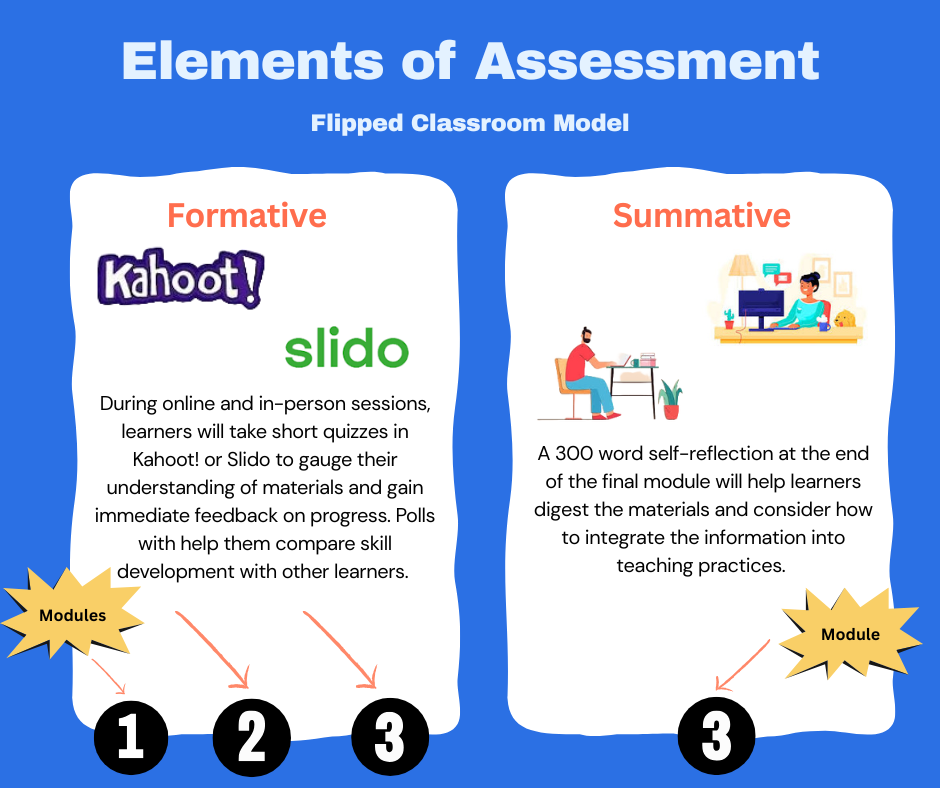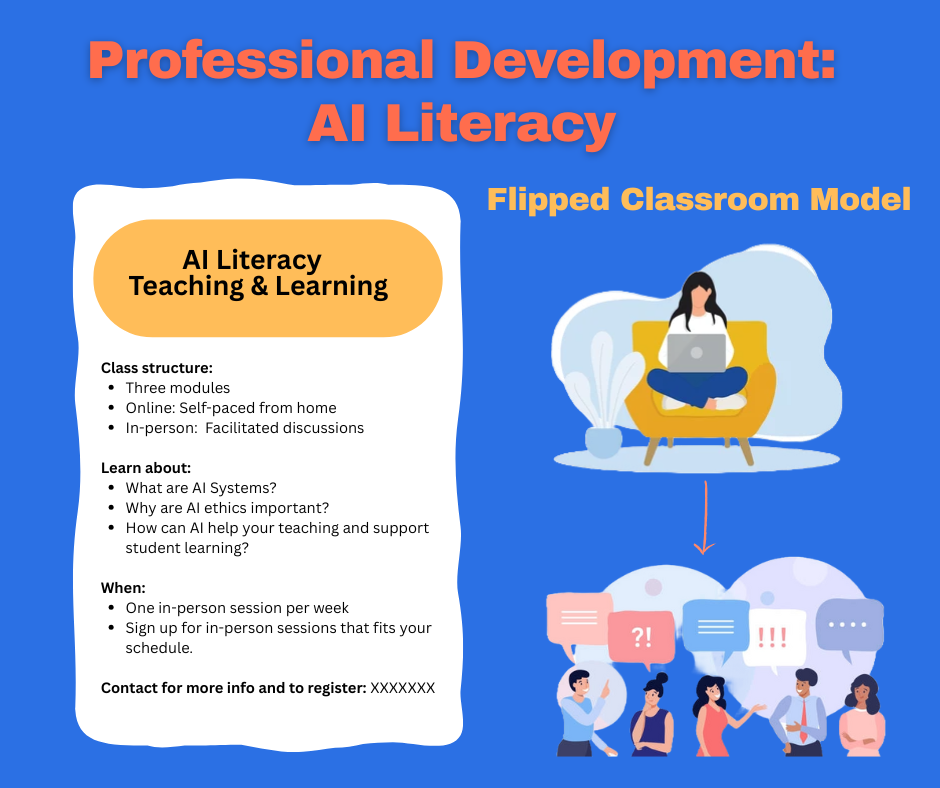Why Use a Flipped Classroom Blended Learning Model?
I chose a Blended Learning model to provide flexibility in how and where learners could access materials. The seven models of blended learning can meet learner needs in different ways – the optimum model for a given learning need depends on the context, preferences, and learning objectives. For this course, I chose a “flipped classroom” model to prioritize discussion and collaboration during the in-person segments.
The flexibility of a flipped classroom model maximizes engagement by giving learners the ability to fit the course work into their schedules as convenient for them.
The course incorporates project-based learning tools that boost engagement, creativity, critical thinking, and interdisciplinary integration. It uses resources from Common Sense Education, UNESCO, and academic research on AI in education.
Assessment opportunities are included in online quizzes so learners could test their own knowledge while following up with a self-reflection to consider how to use AI for teaching and learning in ethical ways. The self-reflection could also provide feedback to course designers for subsequent iterations.
How to create assessments that reflect a learner’s new skills?
It is important to plan assessments at the beginning of course design and to create the metrics for measuring learning based on learning outcomes and performance objectives.
In this learning design, I included a self-reflection as a summative assessment to encourage teachers to internalize some of their new understandings around AI Literacy.
Over time, we should also measure behavior change: how many teachers are incorporating AI into classroom learning, or has there been an improvement in student performance, engagement and interest.
Creating social spaces for learning is known to be a key to improving not only fun but absorption of materials.
Offering opportunities for engagement and interaction is key to any successful course. This could be through discussion boards - or in the case of blended learning, through in-person components.
Gamification is popular - but it is important to ensure that efforts to create interactions do not become gimmicks without substantive rationale or impact.
In popular project-based learning, student collaboration over real-life scenarios, can lead to deeper critical thinking driving creative solutions to a problem.
Even if a course is based on impactful learning theories and incorporates meaningful content built around engaging strategies and social interactions, it will be useless if the target audience isn’t motivated to take it, or if they don’t know it is available.
In these circumstances, some marketing for the course may be necessary - or if a required part of a job, an inviting introduction can be more motivating than a demand to finish the course by a certain day.
Julie Dirksen addresses learner motivation for taking a course, AND absorbing the lessons. Learner autonomy is important, as is establishing goals and using strength-based language, and appropriate feedback.




